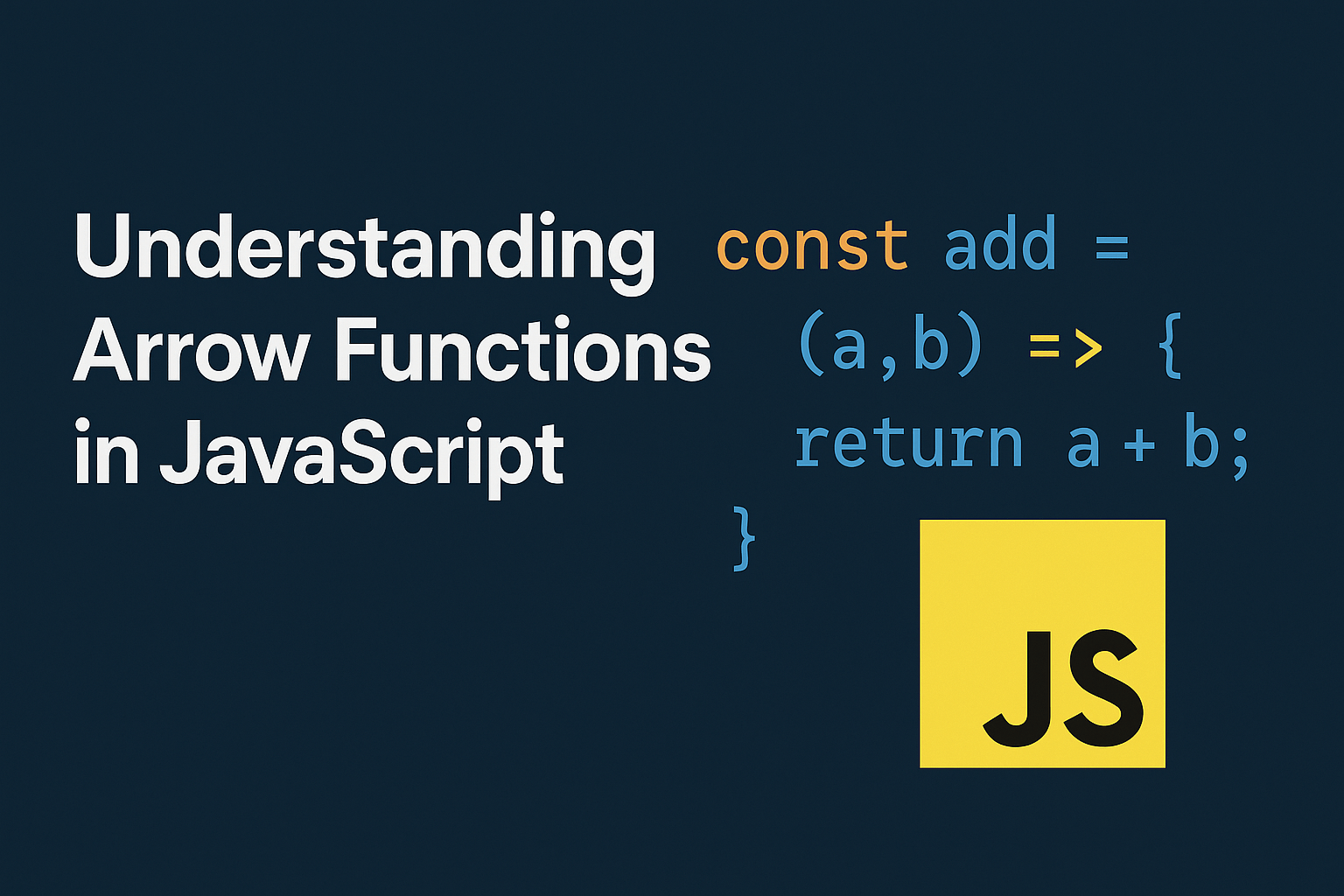Understanding Arrow Functions in JavaScript

- Published on
- /2 mins read/
Introduction
Arrow functions, introduced in ES6, offer a concise syntax for writing functions in JavaScript. They simplify function expressions and provide a more intuitive handling of the this keyword.
Syntax
The basic syntax of an arrow function is:
const functionName = (parameters) => expressionFor example:
const sum = (a, b) => a + b
console.log(sum(2, 3)) // Output: 5If the function has a single parameter, parentheses can be omitted:
const square = (x) => x * x
console.log(square(4)) // Output: 16If the function has no parameters, you must use empty parentheses:
const greet = () => 'Hello, World!'
console.log(greet()) // Output: Hello, World!Usage
Arrow functions are particularly useful for:
- Shorter syntax: They reduce boilerplate code, making functions more concise.
- Lexical
thisbinding: Unlike traditional functions, arrow functions do not have their ownthis. Instead, they inheritthisfrom the parent scope, which is beneficial in scenarios like callbacks.
const person = {
name: 'Alice',
greet: function () {
setTimeout(() => {
console.log(`Hello, my name is ${this.name}`)
}, 1000)
},
}
person.greet() // Output after 1 second: Hello, my name is AliceIn the above example, the arrow function inside setTimeout inherits this from the greet method, allowing access to person.name.
Multi-line Functions
For functions with multiple statements, use curly braces and an explicit return if needed:
const multiply = (a, b) => {
const result = a * b
return result
}Conclusion
Arrow functions provide a streamlined way to write functions in JavaScript, especially for simple operations and callbacks. Their lexical this binding can prevent common pitfalls associated with the traditional function's dynamic this.
If you found this article helpful, consider buying me a coffee to support my work!
